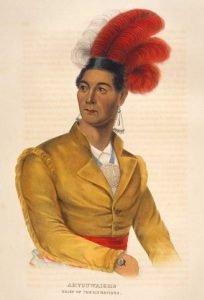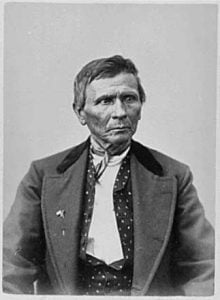Wyandot Indians
Wyandot Tribe: Meaning perhaps “islanders,” or “dwellers on a peninsula.” Occasionally spelled Guyandot. At an earlier date usually known as Huron, a name given by the French from huré, “rough,” and the depreciating suffix -on. Also called: Hatindiaβointen, Huron name of Huron of Lorette. Nadowa, a name given to them and many other Iroquoian tribes by Algonquians. Telamatenon, Delaware name, meaning “coming out of a mountain or cave.” Thastchetci’, Onondaga name. Connection. The Wyandot belonged to the Iroquoian linguistic family. Wyandot Location. The earliest known location of the Huron proper was the St. Lawrence Valley and the territory of the … Read more



